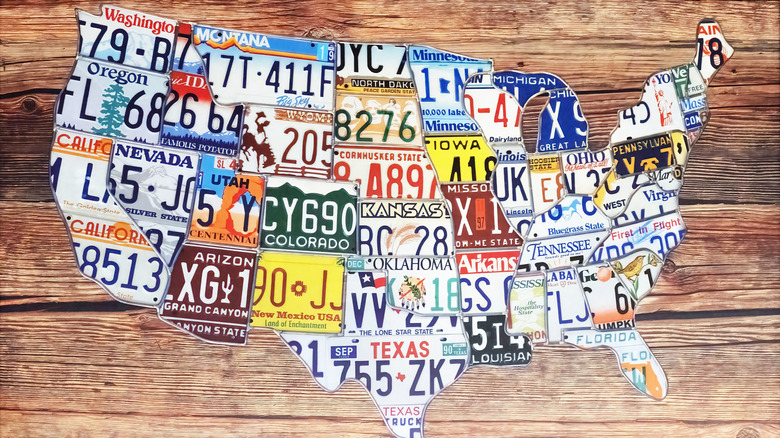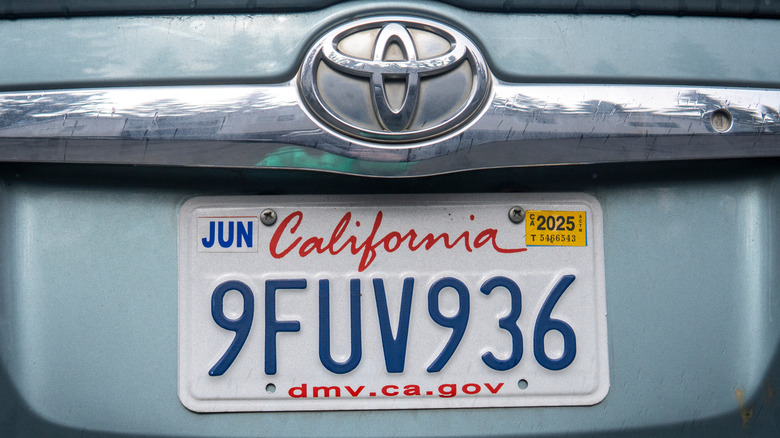What Happens When A State Runs Out Of License Plate Numbers?
License plates originated in New York in 1901, though these rudimentary plates were not issued by the state. Instead, each car owner made one to display their initials. Two years later, Massachusetts was the first state to issue registration plates. They were released in chronological order, so the very first plate had only the number "1" on it. In the ensuing 122 years, every state and the District of Columbia followed suit, issuing license or registration plates to every car owner. Each state offers a unique design, like a flower or state symbol. Some, like Colorado, offer multiple designs and colors, along with a unique combination of letters and numbers.
The method of determining the mix of numbers and letters varies from state to state. Some use a system that depends on the county where the vehicle is registered, and many use different designations depending on the type, or class, of vehicle. The structure of numbers and letters varies as well, as does the number of characters. Smaller states tend to use six, while larger states use seven.
These methods give you millions of combinations, but for some states, that's just not enough. When a state runs out of license plate numbers, it sometimes gets creative, but the most common solution is to simply add a new character.
Has any state ever run out of numbers?
In 2008, the state of Arizona depleted its six-digit combination options. Like other large states that have faced this problem, it had several possible courses of action. It could reissue retired numbers, change the sequence of those six digits, or add a seventh digit. The state elected to add another digit, giving it 106.5 million combinations. The state's motor vehicles division expected at the time that this extra digit would hold them through 2040. As of 2020, the population of Arizona is about 7.2 million, with about 8.3 million registered vehicles, so why does it need over 100 million combinations? The answer is simple: most states do not ever reuse a license plate number, even once it is no longer in use.
California is facing a unique dilemma. The state, which is the largest by population, already uses seven digits on its license plates but is running out of combinations. The current sequence began in 1980 with plate "1AAA000," and California expects to issue "9ZZZ999" by December 2025. Once that plate is issued, the state will start a new numbering scheme with the same number of characters, following a "000AAA0" format.
An increasing population isn't always the driving factor (pun intended) behind the number of vehicle registrations. California is putting some of the blame on the Trump administration's tariffs, which are increasing car sales as buyers worry about price hikes. The state expects the new system to provide enough plates for about 100 years.

